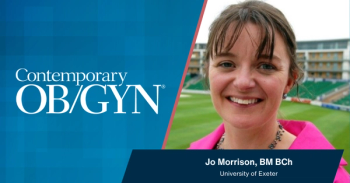
Sign Out: Watching the HT pendulum swing
Two recent reports clarify a major component of the WHI puzzle.1,2 Timing of hormone initiation after menopause does make a difference in cardiac risk and benefits. In the WHI report, women who began estrogen-only (ET) treatment between ages 50 and 59 showed no increased risk and had a 44% reduction in hazard for myocardial infarction, coronary death, coronary artery bypass graft, and percutaneous coronary intervention, protection not seen in women who started estrogen decades later. Reevaluation of findings from the Nurses' Health Study produced similar findings: Using the same baseline inclusion criteria for heart disease as the WHI, nurses who began combined HT soon after menopause experienced a 30% reduction in heart events, compared to placebo users or to nurses who delayed hormones at least 10 years after menopause.
The moral of the story: A "window of opportunity" exists. Early exogenous estrogen replacement retards the progression of clinically silent atherosclerosis and reduces clinical events. However, with prolonged lack of estrogen, not only is protection lost but estrogen treatment becomes hazardous. But how can-or should-physicians put this new message into clinical practice?
The third important point to take back to practice relates to hormone dosage. The Nurses' Health Study suggests persistence of protection from CAD with lower estrogen doses. Other studies, too, have shown that vastly reduced dosages of estrogen can sustain bone protection. The therapeutic levels required to control vasomotor symptoms over the short term are not necessary to protect estrogen-dependent tissues over the long term. As we seek minimum doses for maximum benefit, can we lower the estrogen dose enough to avoid endometrial hyperplasia and render progestin unnecessary? Also not widely discussed in the WHI report was the lack of reduction in endometrial carcinomas in users versus the women on placebo.
Finally, there is the very real clinical issue of safety versus patient preference. We ob/gyns all prefer the oral route-but at what cost? Does its ease of use and favorable impact on cholesterol levels outweigh the increases in triglyceride levels, c-reactive protein, and pro-hypertensive and pro-thrombotic factors that are the burdens of portal absorption and first-pass liver impact? We must reconsider transdermal and transvaginal administration, and if progestin is necessary, even intrauterine application.
If the HT pendulum really is moving back once again, let's make the best of the renewed opportunity for rational care of postmenopausal women. But we must do it wisely and not allow the pendulum to swing too far!
Newsletter
Get the latest clinical updates, case studies, and expert commentary in obstetric and gynecologic care. Sign up now to stay informed.











